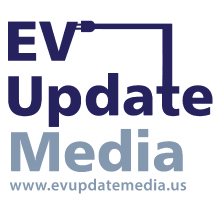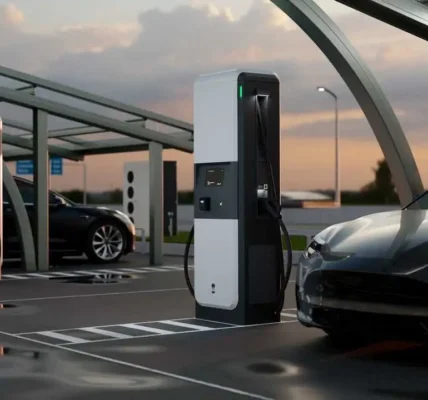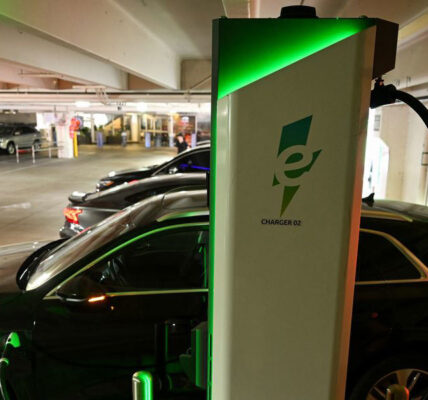As Demand For EV Charging Stations Grows, States Navigate Roadblocks Around Building New Infrastructure
Electric vehicles are growing in popularity, but finding a place to charge them can still be difficult depending on where people live. States are trying to build out their EV infrastructure but have faced some roadblocks in accelerating the transition.
A Pew Research Center survey from 2024 found an estimated 6 in 10 urban residents live within a mile of a public charging station, but that number drops to around 41% of suburban dwellers and just 17% of rural Americans.
“At the end of the day, we have more work to do to make sure that more and more folks feel comfortable and confident when they’re driving their electric vehicles,” said Joe McAndrew, an assistant secretary at the Maryland Department of Transportation.
Maryland ranks in the top 10 of the most EV-friendly states, according to a 2023 survey by iSeeCars, with Vermont, California, Massachusetts and Colorado leading the list, which ranked cities based on residents per EV charger.
The bipartisan infrastructure law passed under the Biden administration in 2021 provided around $7.5 billion to build high-speed chargers at least every 50 miles through a new National Electric Vehicle Infrastructure program known as NEVI.
However, it’s taken years to get construction going for many states. Maryland is set to break ground on Phase 1 of its NEVI projects in the coming weeks, including around 120 fast-charging ports at 22 locations on the most frequented roadways.
“We were being asked for the first time ever to learn and grow and build an EV infrastructure,” McAndrew said about the delay, saying it took time at the state and federal level to get teams and strategies in place.
However, future phases of NEVI projects nationwide are on hold, as the Trump administration’s Transportation Department and Federal Highway Administration reevaluate the program, which requires Transportation Secretary Sean Duffy to approve plans for each state.
State Transportation departments received a letter in February stating no new obligations will occur during the pause, though reimbursement of existing obligations will continue.
“In the three and a half years since the enactment of the Infrastructure Investment and Jobs Act, approximately 84 percent of the NEVI Formula Program funds remain unobligated – a clear indicator that the program needs major reform,” the Department of Transportation told CBS News in a statement.
“FHWA is working to fix the NEVI Formula Program Guidance to address the backlog and align with this administration’s priorities of safety, efficiency, and innovation,” the statement continued, referring to the highway agency.
McAndrew expressed optimism the program will continue to move forward, noting state leaders are committed to continued progress on efforts to expand the EV charging network.
“It might slow us down, but we’re also pretty confident that the funds will show up,” McAndrew said. “The U.S. Department of Transportation hasn’t pulled back funds. They’re ultimately reevaluating the regulations with which we use those funds.”
Meanwhile, EV advocacy groups say an even larger challenge remains: addressing a lack of charging capability within multifamily housing, especially within older apartment and condo buildings.
“The highway infrastructure, I think, is going to be really good; still building and the private sector is doing a great job with that,” said Andy Fraser, a board member with the national Electric Vehicle Association. “I think the challenge is people who don’t have the luxury of being able to charge in their own home.”
Fraser pushed his community in Montgomery County, Maryland, to create a policy for permitting home chargers on public rights of way, since his home does not have a driveway or garage. He paved the way for chargers to be placed on public sidewalks in front of an individual’s home so he could make use of one at his home.
“How can we be a green county if we don’t even allow people to charge on the street? So that was my argument and it happened,” Fraser said of the change enacted five years ago.
Fraser also had to recircuit and upgrade his home’s older electrical box to accommodate the charger. Still, he feels the effort was well worth it and has already paid for itself in savings on gasoline and maintenance.
“There’s no going back right now. All the manufacturers are committed to EVs, but the faster we get there, the better it is for the planet,” he said.
California, the state with the largest number of EV drivers, aims to improve the situation at new multifamily housing sites through its new building code set to take effect in January 2026. It will require new multifamily housing projects to provide at least one Level 2 EV charging receptacle at a parking space for each unit and will also require chargers for residents and guests in 25% of common-use parking spaces.
Nationally, state leaders say public-private partnerships will be key to tackling the problem.
“At the end of the day,” said McAndrew, “we have more work to do to make sure that more and more folks feel comfortable and confident when they’re driving their electric vehicles.”








